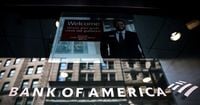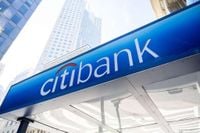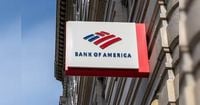Bank of America (NYSE:BAC) has reported a strong performance in its first-quarter earnings for 2025, showcasing resilience amid economic uncertainty fueled by U.S. trade policies. The bank's net interest income (NII) reached $14.4 billion, a 3% increase from the previous year, aligning closely with analysts’ expectations. This growth is attributed to a combination of factors including lower deposit costs and a robust trading environment.
CEO Brian Moynihan expressed optimism during the earnings call, stating, "Our business clients have been performing well; and consumers have shown resilience, continuing to spend and maintaining healthy credit quality." This sentiment reflects a broader trend observed in the financial sector, where major banks like JPMorgan Chase and Goldman Sachs have also reported strong trading revenue driven by market volatility.
Bank of America’s global markets segment reported record equities trading revenue of $2.2 billion, marking a 17% increase over the same period last year. This surge was largely fueled by tariff-driven volatility, which has prompted increased trading activity among investors. Finance chief Alastair Borthwick noted that average deposits rose for the seventh consecutive quarter, nearing the $2 trillion mark, a sign of consumer confidence in the bank's stability.
The total revenue, net of interest expense, climbed to $27.4 billion, a 6% increase compared to projections of $25.78 billion. This growth was driven by a combination of net interest income and noninterest income, indicating a balanced approach to revenue generation across different segments of the bank's operations.
Despite these positive results, concerns linger around the potential impacts of U.S. President Donald Trump’s trade policies. Moynihan acknowledged the uncertainty, stating, "There is a lot to potentially change given the uncertainty around the tariffs and the policies on the future path of the economy." This caution is echoed in the broader market, where fears of a recession have prompted some investment bankers to adopt a more conservative approach to deal-making.
In the first quarter, Bank of America's investment banking fees fell by 3% to $1.5 billion, reflecting a slowdown in mergers and acquisitions (M&A) activity, which dropped 13% according to Dealogic data. This decline highlights the cautious sentiment among dealmakers in light of ongoing trade tensions.
However, the bank's overall net income rose to $7.4 billion, or $0.90 per diluted share, compared to $6.7 billion, or $0.76 per diluted share, a year earlier. This marked the twelfth consecutive quarter of year-over-year revenue growth, underscoring the bank's ability to adapt and thrive in a challenging environment.
Bank of America’s shares have seen a positive response in the market, increasing by as much as 6% on the day of the earnings report. This uptick reflects investor confidence in the bank's performance and its strategic positioning in the face of economic uncertainties. Analysts have noted that the bank's diverse business model and focus on responsible growth are likely to continue providing a buffer against potential market disruptions.
Moreover, the bank's provisions for credit losses increased to $1.5 billion, up from $1.3 billion a year ago, signaling a cautious approach to potential future economic challenges. Borthwick reassured investors that the bank's loan portfolio is more balanced than it has been in the past, and its liquidity has improved significantly since the 2008 financial crisis.
As the financial landscape continues to evolve, Bank of America remains committed to maintaining its growth trajectory. The bank has set an ambitious forecast for its net interest income, projecting it will reach between $15.5 billion and $15.7 billion by the fourth quarter of 2025. This forward-looking approach highlights the bank's confidence in its operational strategy and the resilience of its consumer base.
In summary, Bank of America’s first-quarter results reflect a solid performance driven by strong trading revenue and consumer confidence, despite the backdrop of uncertainty surrounding U.S. trade policies. As the bank navigates these challenges, its focus on responsible growth and diversified services positions it well for the future.








